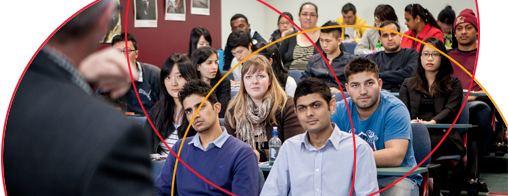Online Journal of International Education
Volume 2, Number 2, 2017
Editor: Dr Adam Brown; Director of Research, Auckland Institute of Studies
Preface
The four articles in this issue of the Online Journal of International Education cover a spectrum of topics within international education. All of them remind us that international education is an industry that forms a substantial revenue-earner for some countries, and needs to be run in a business-like fashion. Coman and Liddicoat adopt a marketing perspective, and discuss buyer behaviour. Chou-Lee’s investigation is also within the marketing sphere, related to customer care. Jackson’s analysis is of Sustainable Development Goals, that need to be SMART (specific, measurable, attainable/appropriate, relevant/realistic, and time-bound). Finally, Ma and Abbott discuss human capital creation, as a driver of economic growth in China.
The European Erasmus 2.0 generation study-abroad student market
The Erasmus 2.0 Generation refers to young Europeans. Over half a million per year travel overseas to study, train, gain work experience and volunteer. The intention is that these people will return to their European countries in order to fill skill shortages in those countries. Keith Coman and Linda Liddicoat examine the various reasons underlying people’s decisions to undertake study-abroad. These include social influences (reference groups and social identity) and psychological influences (motivation and attitudes). By understanding people’s purpose and motivation for study-abroad, marketing strategies directed at those people can be better targeted.
Pastoral care
Unless one has undertaken study abroad, it is difficult to imagine the upheaval involved. This acculturation involves, for some students, homesickness and missing family, the unfamiliarity of the new country and new educational system, having to manage your own time and finances, etc. Manaia Chou-Lee discusses the many pastoral care practices that institutions catering to international students should provide, including homestay facilities, the initial orientation process, school activities, and mixed group work. The importance of intercultural interaction and integration is highlighted.
Sustainable development goals
In volume 3 issue 2 (2012) of the predecessor to this journal, The Journal of International Education and Business, Dunuan, Ali & Jackson critically analysed the UN Millennium Development Goals (MDGs), one of which was to “achieve universal primary education”. The lack of success of some countries in achieving that goal, and the lack of clarity of exactly what it means and how to measure it, led to the formulation of Sustainable Development Goals (SDGs). The SDG related to education is “lifelong quality education for all”, and once again, as Kenneth Jackson argues, the devil is in the detail of what it means and how to measure it. It is an honourable intention and one that would lead to increased human capital and economic development, but while it is still a vaguely worded goal, it is difficult to know if any country has achieved it.
Human capital and economic growth in China
One country that has clearly progressed economically over the last 30 years is China. Xiaoying Ma and Malcolm Abbott give a historical overview of this staggering growth, and consider the impact of human capital development by education, especially higher education, in the higher growth in GDP. Investment in the upgrading of the skills and knowledge of the labour force go hand-in-hand with improvements in physical capital such as factories, equipment and transport equipment. The demand for human capital has led to the establishment of private tertiary institutions, since the government could not keep up with the demand.
Adam Brown
Editor, Director of Research

